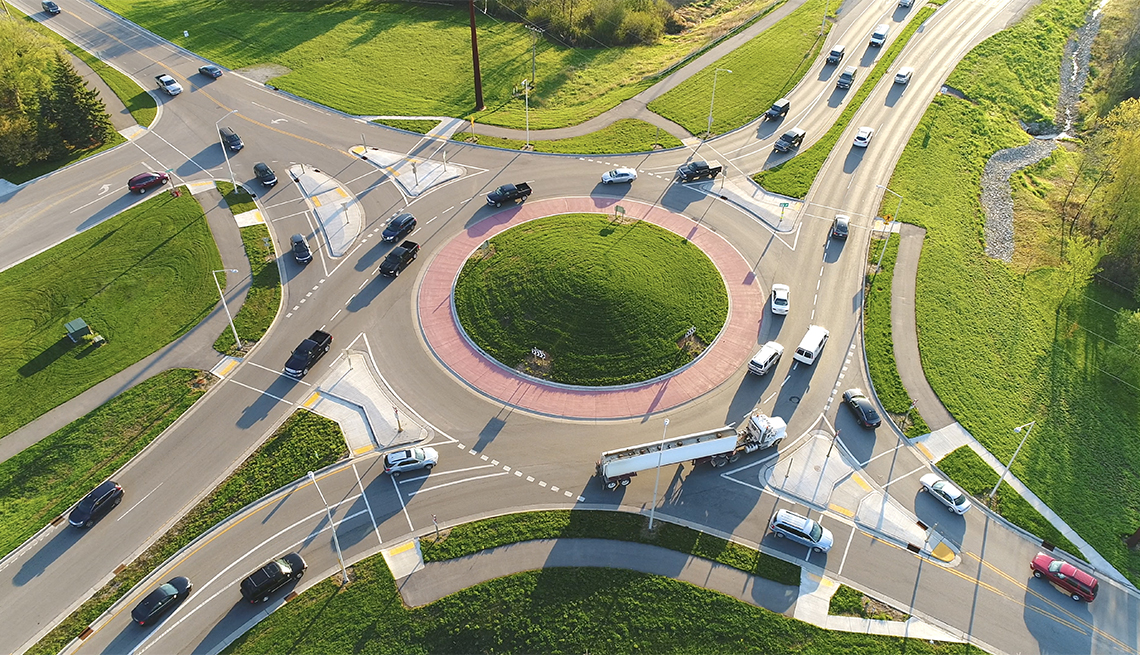
What's a roundabout and how do i navigate one?
- Select a language for the TTS:
- UK English Female
- UK English Male
- US English Female
- US English Male
- Australian Female
- Australian Male
- Language selected: (auto detect) - EN
Play all audios:

When you encounter a roundabout on a road, the best advice is the British adage to “keep calm and carry on." The new versions of these circular intersections first emerged in 1966 in
the United Kingdom, when English engineer Frank Blackmore, then age 50, had the idea to require vehicles entering the circle to yield to oncoming traffic. He further redesigned modern
roundabouts to be much smaller than older traffic circles, such as the Arc de Triomphe in Paris, where a dozen streets intersect, or Columbus Circle, at the southwest corner of Central Park
in New York City. The newer roundabouts require vehicles to negotiate sharper curves to enter and travel around them, according to the Insurance Institute for Highway Safety (IIHS), based in
Arlington, Virginia. You will find lower speed limits in modern roundabouts than in the bigger traffic circles, also known as rotaries, and the driving rules are different. "Most are
designed well,” says Kevin Rider, a nationally known expert witness and founder of Forensic Human Factors in Columbus, Ohio. “They are traffic-calming devices and highly efficient at
lessening the number of conflict points." Drivers tend to lower their speed in roundabouts because of the sharper curves, which lessens the number of crashes by a third to a half and
their severity by as much as 80 percent. Right-angle, left-turn and head-on collisions are eliminated — unlike intersections with traffic lights — according to the IIHS. ANXIOUS ABOUT
ROUNDABOUTS? If you dread encountering roundabouts, you're not alone. Drivers 50 and older are especially wary of this new generation of circular intersections, in part because they
were introduced in the United States several years after most older drivers earned their licenses. The first modern roundabout in the U.S. was built in 1990 in Las Vegas. Since then, almost
7,500 similar intersections nationwide have been built because they are safer, according to civil engineering firm Kittelson & Associates, in Portland, Oregon. One of the firm's
principal engineers, Lee Rodegerdts, has been keeping a database on roundabouts since 1997, in part based on aerial photos. Even with older drivers’ lack of familiarity, such traffic calming
designs benefit the oldest drivers, the IIHS says. From 2014 to 2018, government data shows that more than half of drivers 75 and older involved in fatal crashes had multiple-vehicle wrecks
at intersections.
